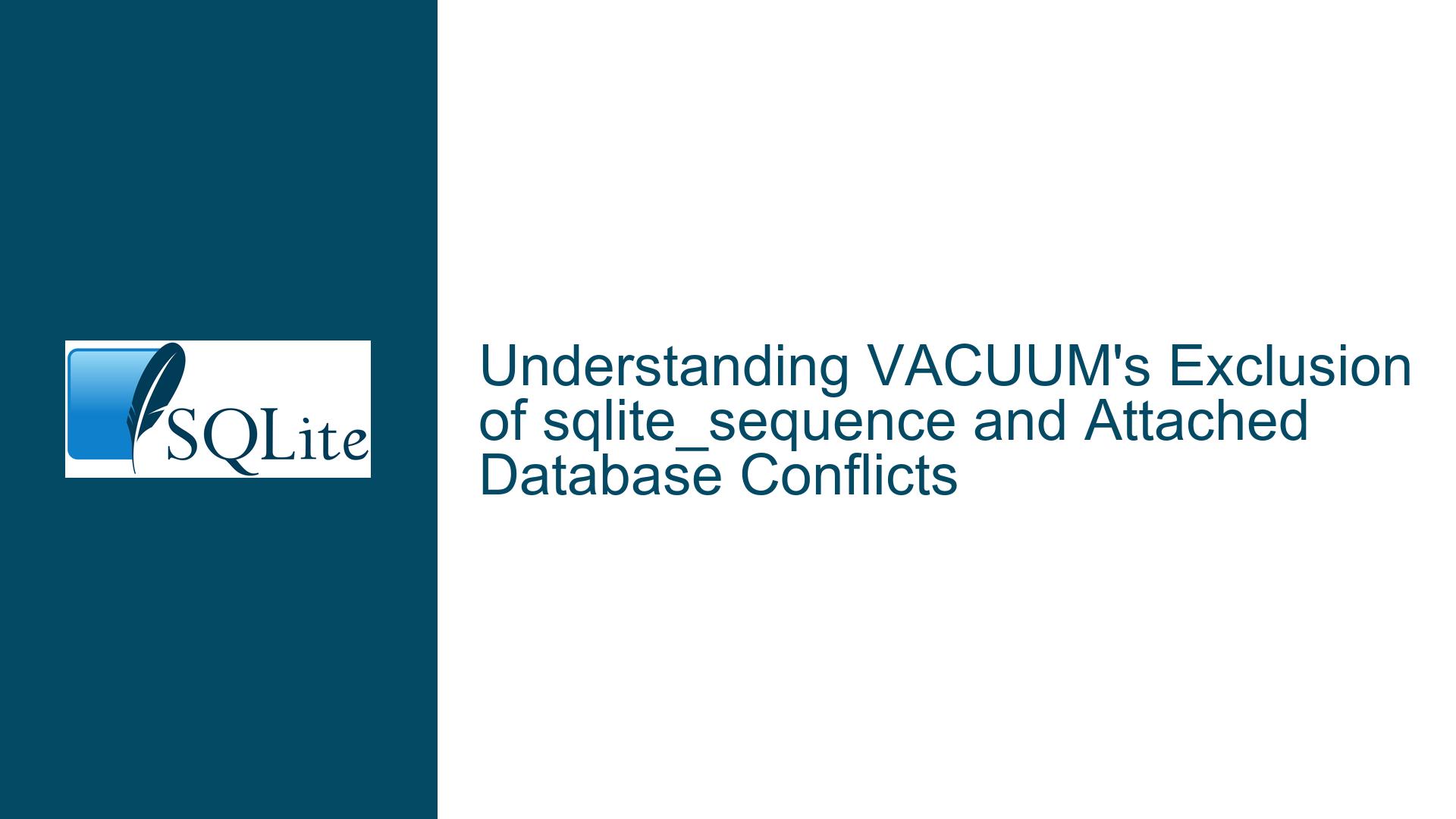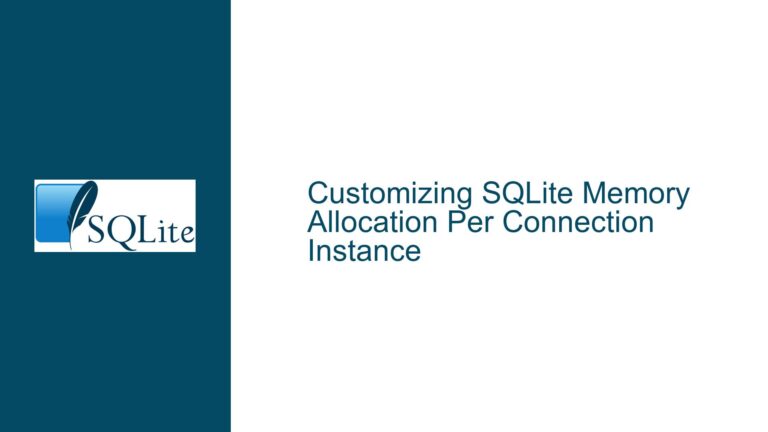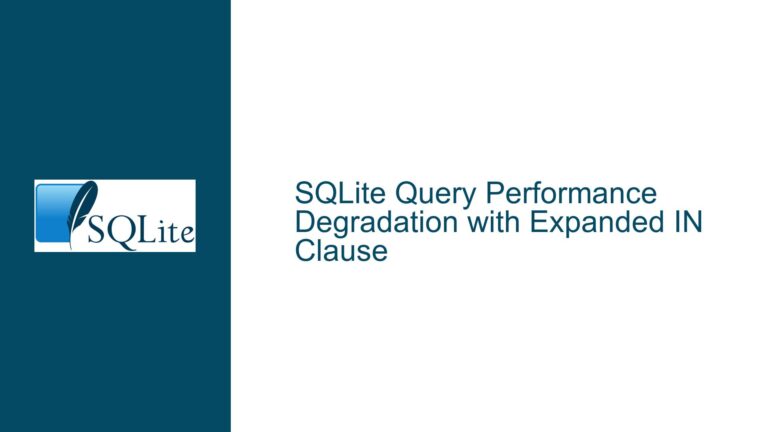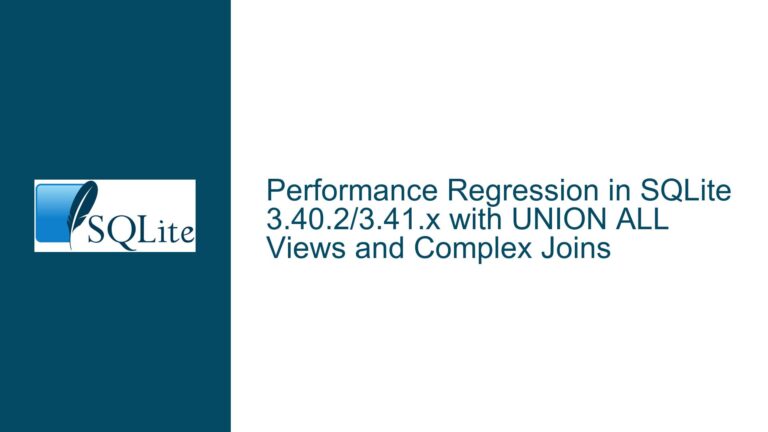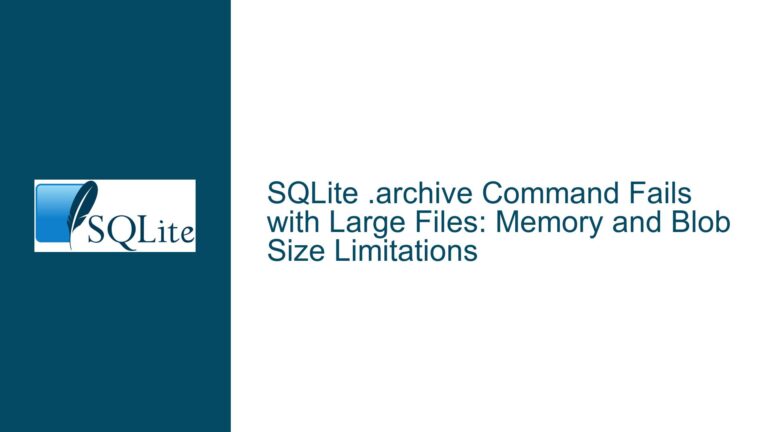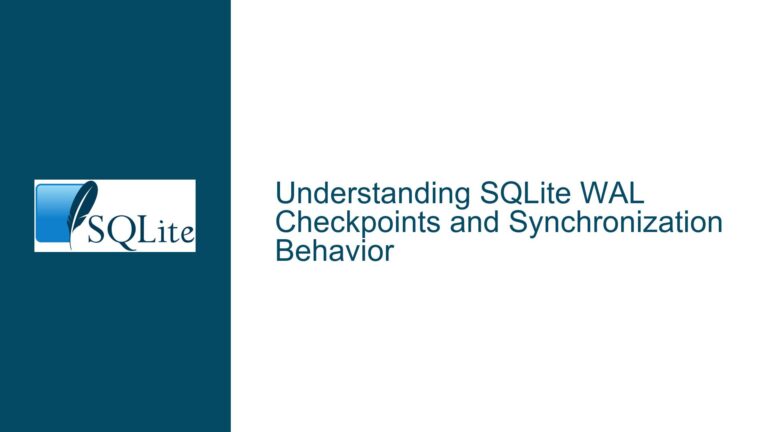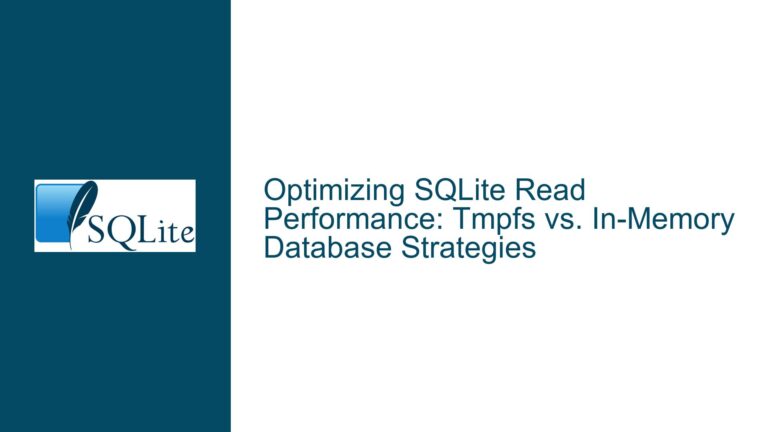VACUUM’s Exclusion of sqlite_sequence and Attached Database Conflicts
The Role of sqlite_sequence in AUTOINCREMENT and VACUUM Behavior
The sqlite_sequence table is a system-generated table in SQLite that tracks the maximum ROWID values for tables with AUTOINCREMENT columns. When a table with an AUTOINCREMENT column is created, SQLite automatically generates or updates this table to ensure ROWID uniqueness. During a VACUUM operation, which rebuilds the entire database file to reclaim unused space and optimize storage, SQLite explicitly excludes copying the sqlite_sequence table unless it is required by an existing AUTOINCREMENT column in the schema.
This exclusion occurs because VACUUM operates by creating a temporary database, copying all schema definitions and data from the original database to the temporary one, and then replacing the original with the optimized version. The sqlite_sequence table is regenerated dynamically during the schema-copying phase if any tables with AUTOINCREMENT columns exist. If no such tables are present, retaining the sqlite_sequence table would result in redundant data occupying space in the new database. By omitting it during the initial copy phase, SQLite ensures that only necessary entries are recreated, avoiding bloated storage.
For example, consider a scenario where a database previously contained a table orders with an AUTOINCREMENT primary key. If this table is dropped, the sqlite_sequence entry for orders remains but becomes obsolete. During VACUUM, SQLite skips copying this orphaned entry. If another AUTOINCREMENT table exists, the sqlite_sequence table will be reinitialized with valid entries as part of the schema rebuild. This design prevents stale data from persisting in the vacuumed database.
Attached Database Naming Conflicts During VACUUM Execution
The VACUUM command in SQLite uses an internal mechanism where it temporarily attaches a new database named vacuum_db to the connection. This temporary database serves as the target for the optimized schema and data. If an attached database with the name vacuum_db already exists in the connection when VACUUM is executed, the operation will fail due to a naming collision.
This behavior stems from SQLite’s internal reliance on fixed names for temporary objects during maintenance operations. The vacuum_db name is hard-coded into the VACUUM implementation, and there is no runtime negotiation for alternative names. The conflict arises because SQLite prohibits attaching multiple databases with the same schema name to a single connection. If a user has manually attached a database using ATTACH 'backup.db' AS vacuum_db, the preexisting vacuum_db schema will block the VACUUM process.
The lack of documentation around this restriction is a notable oversight. Developers working with attached databases might inadvertently trigger this failure, especially in environments where database names are dynamically generated. While SQLite reserves names starting with sqlite_ for internal use, vacuum_db does not fall under this reserved namespace. Renaming the internal temporary database to a reserved name like sqlite_vacuum could mitigate conflicts without breaking backward compatibility, as user-defined attachments with reserved names are already prohibited.
Mitigating sqlite_sequence Redundancy and vacuum_db Attachment Issues
To address the exclusion of sqlite_sequence during VACUUM, developers should manually audit their databases for obsolete entries. Executing a query such as SELECT * FROM sqlite_sequence; will reveal all tracked tables. If entries exist for tables that no longer have AUTOINCREMENT columns, these can be safely deleted using DELETE FROM sqlite_sequence WHERE name='obsolete_table';. This ensures the table remains minimal and relevant.
For scenarios where VACUUM fails due to an attached vacuum_db, the immediate solution is to detach any database with that name before running the command. For example:
DETACH DATABASE vacuum_db;
VACUUM;
Proactively avoiding the use of vacuum_db as a schema name for attached databases is critical. In environments where dynamic attachment is necessary, prefixing user-defined database names with a non-reserved identifier (e.g., app_vacuum_backup) reduces collision risks.
Long-term, advocating for SQLite to adopt a reserved name (e.g., sqlite_vacuum_temp) for its internal attachments would align with existing practices and eliminate this conflict. Developers can monitor SQLite’s release notes or official documentation for updates on this front.
Implementing pre-VACUUM checks through application code or scripts can further prevent runtime failures. A conditional check for attached databases named vacuum_db ensures the command executes smoothly. For example:
SELECT name FROM pragma_database_list WHERE name='vacuum_db';
If the query returns a result, the application can either detach the database or notify the user to resolve the conflict.
By combining manual cleanup of sqlite_sequence, proactive naming conventions for attached databases, and preemptive checks in application logic, developers can optimize VACUUM operations and avoid common pitfalls associated with these internal mechanisms.
